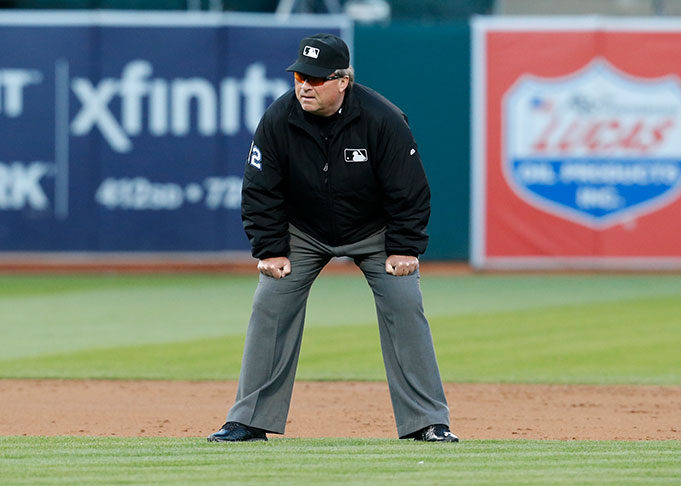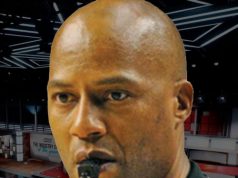Residence: Huntington Beach, Calif.
Occupation: MLB umpire; owns Gerry Davis Sports, which sells officiating equipment and attire.
Experience: MLB umpire since 1982; worked MLB World Series 1996, 1999, 2004, 2009 and 2012; worked the Little League World Series 2017.
REFEREE: How did the Little League umpiring come about?
DAVIS: Our crew was scheduled to work the (MLB Little League Classic) game, the Cardinals versus Pirates. … Little League Baseball arranged for me to work the Little League game.
REFEREE: Have you umpired on a small diamond before?
DAVIS: When I first started in St. Louis, where I’m from originally, I umpired Little League before going to umpire school. So I had worked that, but it was so long ago.
REFEREE: How did you integrate with the crew? Did you do anything special with mechanics?
DAVIS: We certainly went over coverages and things like that. They have a couple very different rules. One is a runner cannot leave their respective base until the pitch crosses the plate, and you have a red flag that you have to throw if that does occur because there can be implications after that. And fly ball coverage is very different as well. In the major leagues, when you’re out behind second base and there’s a ball hit to the outfield in the gaps or to straightaway center, that becomes your responsibility. It’s the opposite when you’re working a six-man (in Little League). If there’s a ball that’s hit to the outfield, you come into the infield. So there were different mechanics that we discussed before the game.
REFEREE: What was the biggest challenge getting reacclimated to the small diamond?
DAVIS: The thing that was really weird is that when you’re in the outfield, you’re almost as close to the outfield wall as you are to home plate. So it was an adjustment, there’s no question.
REFEREE: How long were you on the field and did you have any calls?
DAVIS: I worked second base and I worked two innings and did not have any calls, which is the way umpires like it.
REFEREE: What were your impressions of the volunteer umpires?
DAVIS: I think they did a great job. I was very impressed with the plate umpires not only in the game I worked, but in all the games I saw. It’s quite an accomplishment for them. That’s kind of a lifelong dream for those guys, to be able to advance to the Little League World Series and it’s quite an accomplishment for them.
REFEREE: And fun to work alongside a pro umpire.
DAVIS: We did have a little bit of a thing in that regard. Between innings, I went over to talk to the first-base umpire and said, “I don’t know what protocol is here and I don’t want to get you in trouble, I don’t know if you’re allowed to talk between innings.” And he said, “I’m never going to work on a field with Gerry Davis again, so if I get in trouble, too bad.”
REFEREE: I have seen footage of umpires at the Little League World Series having to do the chicken dance between innings. They didn’t make you do that, did they?
DAVIS: They did not. But I did get to high-five the mascot on the way out and that kind of stuff. It was really a great experience. It sounds corny and stuff, but as I’ve gotten older I’ve gotten reflective on how fortunate I’ve been in my career. The opportunity to give something back is something that I’ve wanted to do for quite some time and I’m hopeful that there can be more involvement with Little League and their umpire program in the future.
REFEREE: Sounds like it was fun.
DAVIS: It was an overall great experience and I would welcome the opportunity again. One of the things I said while there is that anyone who is a baseball fan at all should experience Williamsport. I had gone maybe 15 years earlier with my son, just as a fan, and really fell in love with the atmosphere. So I knew when we were going to be working a game, I was excited for it, very much so. ≤
What's Your Call? Leave a Comment:
Note: This article is archival in nature. Rules, interpretations, mechanics, philosophies and other information may or may not be correct for the current year.
This article is the copyright of ©Referee Enterprises, Inc., and may not be republished in whole or in part online, in print or in any capacity without expressed written permission from Referee. The article is made available for educational use by individuals.


















